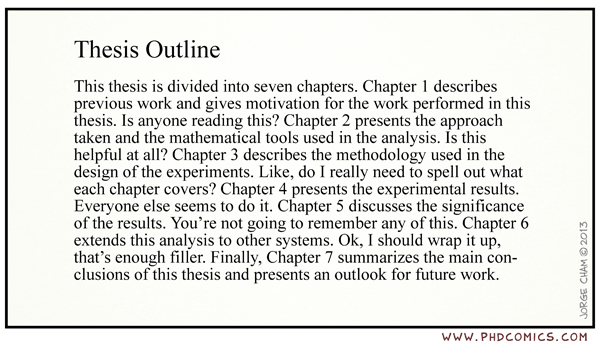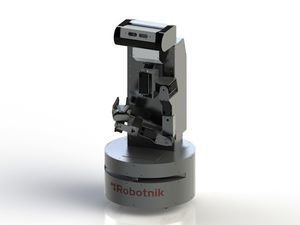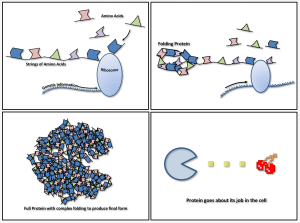Thousands of people die every day from malaria, a disease that is transmitted to humans solely through mosquitoes. With CRISPR, scientists can easily genetically engineer mosquitoes incapable of transmitting malaria and using a technique called gene drive, they can force that genetic change into the native mosquito population. So, should we do it?
Tags: CRISPR genetics malaria medicine science videoSambinns92
Shared posts
Should we use CRISPR to engineer mosquitoes incapable of transmitting malaria?
I Hate the Lord of the Rings
Remy Porter hates The Lord of the Rings because it feels too much like work, too much like "every crappy enterprise IT project". The tale begins with Gandalf, a legacy systems developer who pushes off important work onto Bilbo, who reluctantly became a developer after becoming proficient at spreadsheet macros. I wasn't expecting too much from this video b/c of the title, but it's a surprisingly entertaining analogy.
Tags: books movies The Lord of the Rings videoIs Impossible Too Strong?
When I say impossible or nearly so, it is because it would require some random actor* to do the following:
- Convince Russia and Iran to stop supporting Assad. All we know about the international politics of intervention is that when outsiders pour in support on opposing sides, the conflict endures, which implies more casualties. So, we need to get the folks who are supporting Assad to switch sides. To be clear Assad is killing more Syrians than ISIS, so if you want to save lives ....
- Figure out which local ally is going to have heft domestically and have interests that line up with the outside supporters. Given what we know what happens when there are more veto players, um, not good.
- Find some kind of interest that will justify for the audiences at home (that is, within random actor x) the tax dollars, the loss of life, etc. that the intervention will cost.
- Staying power: any intervention in Syria would require not just a quick invasion, but an occupation/peacekeeping effort that would take at least twenty years (see Afghanistan).
* And don't kid yourselves: that random actor is the US. Nobody else has the capabilities to do the job. It could be the US+ as in NATO or as in US and coalition of the willing, but nothing meaningful can happen without the US.
The speech accent archive
Sambinns92Do accents still interest you? This website has all of them!
George Mason University's speech accent archive collects English speech samples from all over the world. Each speaker is asked to say the same snippet of text:
Tags: languagePlease call Stella. Ask her to bring these things with her from the store: Six spoons of fresh snow peas, five thick slabs of blue cheese, and maybe a snack for her brother Bob. We also need a small plastic snake and a big toy frog for the kids. She can scoop these things into three red bags, and we will go meet her Wednesday at the train station.
07/17/13 PHD comic: 'Your Thesis Outline'
Sambinns92If theses weren't so important, this is basically how I'd write mine.
| Piled Higher & Deeper by Jorge Cham |
www.phdcomics.com
|
|
 |
||
|
title:
"Your Thesis Outline" - originally published
7/17/2013
For the latest news in PHD Comics, CLICK HERE! |
||
Comic for June 30, 2013
System in the Wild: Jimmy the Murderdog Edition
Sambinns92Things that make me wish I did BioMed.
This one courtesy of Systemic @GreyDuck on Twitter. I see the resemblance to Jimmy the Murderdog. Do you?
Send cool posts and System images to systemcomic at gmail!
What Do Philosophers Believe?
Academics of all stripes enjoy conducting informal polls of their peers to gauge the popularity of different stances on controversial issues. But the philosophers — and in particular, David Bourget & David Chalmers — have decided to be more systematic about it. (Maybe they have more controversial issues to discuss?)
They targeted 1,972 philosophy faculty members at 99 different institutions, and received results from 931 of them. Most of the universities were in English-speaking countries, and the others were chosen for strength in analytic philosophy, so the survey has an acknowledged bias toward analytic/Anglocentric philosophy. They asked for simple forced-response answers (no essay questions!) concerning 30 different topics, from belief in God to normative ethics to the nature of time. The answers are pretty intriguing.
Results below the fold. Note that atheism easily trumps theism, and compatibilism is the leading approach to free will (although not by a huge amount). Only about half of the recipients identify as naturalists, which is smaller than I would have thought (and smaller than the percentage of “physicalists” when it comes to the mind, which is surprising to me). When they dig into details, there is a strong correlation between theism and whether a person specializes in philosophy of religion, predictably enough. Among philosophers who don’t specifically specialize in religion, the percentage of atheists is pretty overwhelming.
1. A priori knowledge: yes 71.1%; no 18.4%; other 10.5%.
2. Abstract objects: Platonism 39.3%; nominalism 37.7%; other 23.0%.
3. Aesthetic value: objective 41.0%; subjective 34.5%; other 24.5%.
4. Analytic-synthetic distinction: yes 64.9%; no 27.1%; other 8.1%.
5. Epistemic justification: externalism 42.7%; internalism 26.4%; other 30.8%.
6. External world: non-skeptical realism 81.6%; skepticism 4.8%; idealism 4.3%; other 9.2%.
7. Free will: compatibilism 59.1%; libertarianism 13.7%; no free will 12.2%; other 14.9%.
8. God: atheism 72.8%; theism 14.6%; other 12.6%.
9. Knowledge claims: contextualism 40.1%; invariantism 31.1%; relativism 2.9%; other 25.9%.
10. Knowledge: empiricism 35.0%; rationalism 27.8%; other 37.2%.
11. Laws of nature: non-Humean 57.1%; Humean 24.7%; other 18.2%.
12. Logic: classical 51.6%; non-classical 15.4%; other 33.1%.
13. Mental content: externalism 51.1%; internalism 20.0%; other 28.9%.
14. Meta-ethics: moral realism 56.4%; moral anti-realism 27.7%; other 15.9%.
15. Metaphilosophy: naturalism 49.8%; non-naturalism 25.9%; other 24.3%.
16. Mind: physicalism 56.5%; non-physicalism 27.1%; other 16.4%.
17. Moral judgment: cognitivism 65.7%; non-cognitivism 17.0%; other 17.3%.
18. Moral motivation: internalism 34.9%; externalism 29.8%; other 35.3%.
19. Newcomb’s problem: two boxes 31.4%; one box 21.3%; other 47.4%.
20. Normative ethics: deontology 25.9%; consequentialism 23.6%; virtue ethics 18.2%; other 32.3%.
21. Perceptual experience: representationalism 31.5%; qualia theory 12.2%; disjunctivism 11.0%; sense-datum theory 3.1%; other 42.2%.
22. Personal identity: psychological view 33.6%; biological view 16.9%; further-fact view 12.2%; other 37.3%.
23. Politics: egalitarianism 34.8%; communitarianism 14.3%; libertarianism 9.9%; other 41.0%.
24. Proper names: Millian 34.5%; Fregean 28.7%; other 36.8%.
25. Science: scientific realism 75.1%; scientific anti-realism 11.6%; other 13.3%.
26. Teletransporter: survival 36.2%; death 31.1%; other 32.7%.
27. Time: B-theory 26.3%; A-theory 15.5%; other 58.2%.
28. Trolley problem: switch 68.2%; don’t switch 7.6%; other 24.2%.
29. Truth: correspondence 50.8%; deflationary 24.8%; epistemic 6.9%; other 17.5%.
30. Zombies: conceivable but not metaphysically possible 35.6%; metaphysically possible 23.3%; inconceivable 16.0%; other 25.1%.
Yes, some of the descriptions might not mean that much at first glance. Google is your friend!
Selfish Information and the Depth of Disease
The last 100 years has seen a series of phenomenal breakthroughs in the biological understanding of disease. From the advent of antibiotics to the sequencing of the human genome, we have come a very long way in a short amount of time, but we still have a long way to go. This is a story about a fascinating disease, the understanding of which has revolutionized the way we think of infectious disease. This disease also speaks to the depth of scientific understanding and biological control that will be needed before we will be able to call disease a thing of the past.
Many diseases are caused by infectious pathogens which we are exposed to throughout our lives. A pathogen is usually defined as a microbe which causes a disease. For instance, if you eat some raw meat or unwashed vegetables and get sick, the pathogen causing your illness could likely be some form of the Salmonella bacterium.
Unfortunately, defining pathogens as microbes which cause disease starts to fall apart when you consider viruses, as these simple clumps of genetic material and protein cannot live on their own and are not really considered to be alive at all. Common colds and flus are caused by viruses which get transmitted to you from another infected person and then start reproducing in the cells lining your respiratory tract.
It is actually quite amazing how simple these viruses can be, with the smallest viruses having only a few genes. This means that a clump of matter with only a few thousand proteins and the equivalent of about 1 kilobyte of genetic information, have evolved the capacity to evade your immune system (at least temporarily), get into your cells, and turn them into virus factories. For comparison, each of your cells has a DNA code in the range of 750 megabytes of information and contains billions of proteins
Given that viruses fall below the threshold for what we would define as life, a broader definition of a pathogen is needed. Fundamentally, pathogens are simple self-reproducing patterns of biomolecules that have evolved to parasitize much more complex self-reproducing patterns of biomolecules like you. Pathogens have outsourced all of the complexity necessary for dealing with the environment and gathering energy to their hosts. Pathogens opt to steal energy from your cells and channel it into their own selfish reproduction. Thus, an alternative definition of a pathogen might simply be any biological unit of parastic self-reproducing information.
As simple as viruses can be, it turns out that this is far from the simplest that a disease causing pattern of information can be.
To understand the next part of the story, I am going to need to explain a little bit about protein. To the uninitiated, the word protein might conjure up nebulous thoughts of some kind of nutrient that you get from steak and nuts. In actual fact, protein is not only found in meat, but is what makes up the nanomachines that are performing all of the behind the scenes magic going on in each and every one of your cells. They make up everything from the living skeleton that supports your cells, to the enzymes that break down your food, to the molecular pumps that move chemicals in and out of the cell.
Literally, if anything is happening in your cells, its probably being done by protein.
Futurists imagine a world where we have developed the capacity to synthesize nanomachines that can fit inside of a cell and perform complex tasks, but the amazing fact is that this is already happening – right now… inside of you! At this very moment, millions of tiny protein robots are being synthesized to perform the plethora of tasks necessary to make you work.
This process relies on very special biological robot replicators, known as ribosomes, which function to create more proteins for the cell. These ribosomes read strips of genetic information and string together the building blocks of protein, known as amino acids. Depending on the specific genetic code being read, the ribosome will incorporate the appropriate amino acid into a growing string of amino acids.
The amino acids are essentially just 20 differently shaped chemicals which can be strung together to create a strand of any sequence. As these shapes come together they will start to fold up into a tangled structure that is a protein. Eventually, long strings of amino acids form into larger and larger structures, resulting in the final functional structure of the protein. In its final form the protein becomes functional and will start to go about its job in the cell.
How your body turns genetic information into bio-robots
With only ~20 building blocks to work from, the ribosome can generate the endless array of proteins, each with a different shape that suits its final function.
The process of protein folding is actually quite a complicated process, and despite intensive study of how it works we still cannot completely simulate it (even on super computers). You can play a game and help scientists understand the process of protein folding over at fold-it.
What we do know about protein folding, is that in some cases this process goes wrong and proteins become misfolded. The cell has evolved ways to deal with misfolded proteins by chewing them up. In some rare cases however, these proteins will not be degraded and they can build up within the cell. It is thought that this build up of misfolded protein is responsible for some of the damage associated with aging.
Because proteins have the capacity to stick to eachother, this means that in some very rare cases misfolded proteins have can somtimes transmit their misfolded state to other proteins like it. By helping similar proteins become misfolded they will set off a chain reaction, causing more and more accumulation of useless and possibly damaging forms of protein.
 Some misfolded proteins can replicate their misfolded state within similar proteins, leading to a dangerous chain reaction.
Some misfolded proteins can replicate their misfolded state within similar proteins, leading to a dangerous chain reaction.
This type of misfolded protein chain reaction is precisely what happens in a disease known as Creutzfeld-Jakob Disorder (CJD). In CJD a protein called a prion becomes misfolded in such a way that it promotes further misfolding in other prion proteins. This sparks a chain-reaction, which results in the disease characterized by rapid onset of severe dementia and eventually results in death.
When this type of prion disease occurs in cows it is known as Bovine Spongiform Encephalopathy (BSE) or “mad-cow disease”. In the United Kingdom, it is estimated that 166 people contracted BSE by eating beef which was contaminated with misfolded prion proteins. These people developed a form of CJD, and subsequently died of the disease.
This means that the misfolded state of prion protein was somehow able to propogate from one species to another through eating! This type of transmissible prion diseases also occurs in deer populations, where it is known as chronic wasting disease, and sheep, where it is known as scrapie.
The fact that misfolded prions can transmit disease from one individual to another is actually quite mind-blowing. Prions do not carry no genetic information at all, in fact they don’t even need to have any special amino acids. The only information they need carry is an anomalous twist in their protein folding which can selfishly reproduce itself in the prions it encounters.
Since, 1989 various changes in the handling of cattle and beef has prevented widespread outbreaks of CJD, but there remains a constant undercurrent of ‘classical’ CJD which occurs in around 1 in 1 million people. In these cases, the disease is not thought to be linked to eating beef, but rather is driven by random misfolding in prions already present in the body.
While some cases are linked to the presence of genetic mutations which might favour the misfolding of prions, known as familial CJD, this accounts for only about 10-15% of CJD cases. The majority of CJD cases are due to random misfolding of prion proteins leads to a chain reaction and just happens to kill around 1 in every million people.
This means that as far as it is currently understood, the cause of CJD is a purely sporadic event. Simply through the ongoing process of folding billions of proteins in millions of people, some of them are going to randomly go bad. And when prions go bad in just the wrong way they will set off a chain reaction that will kill the people who are attached to them.
You might say to yourself that 1 in 1 million is not too bad of odds, but new research indicates that self-propogating protein misfolding may also be behind major diseases like Alzeimers and Parkinson’s Disease. There is a great article which talks about new research supporting this possibility in the most recent issue of Scientific American [paywall].
So what does all of this mean? CJD teaches us that an infectious pathogen can be as simple as an abherrent fold in a protein. This drives home the point that we must dissolve our expectations of what a disease causing agent must be. Any pattern which can copy itself (no matter how simple) can represent a potential danger to larger patterns of information like human beings.
This also underlines the depth of biology which is often missed given the hype around the DNA genome. Our DNA is not the only blueprint that is of importance to understanding our biology, there is vital information stored within the physical state of our living cells as well. It seems plausible that the amount of information encoded in the physical state of our cells may be even larger then that encoded by the DNA. Until we can understand the physical interactions of all of the proteins in all of our cells we will not truly be able to understand the causes and develop treatments for many diseases. We are a long way from even simulating the entirety of a single cell, let alone actually tracking the interactions of the billions of proteins within a living cell. The idea of understanding the number of protein interactions within an entire body is an unfathomable dream at this point.
We have a long way to go.
This is why we need better computers.
This article is the first in what I hope to be a series about the advancement in the understanding and treatment of disease and how far we yet have to go before we will see an end to disease. How did I do? Was it too technical? Not technical enough? Leave a comment in the feedback section and let me know.




